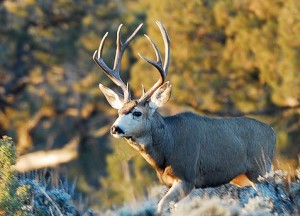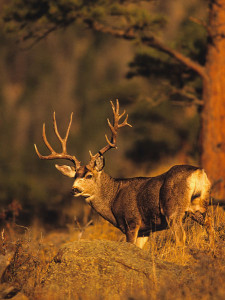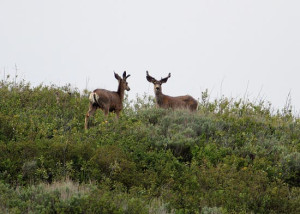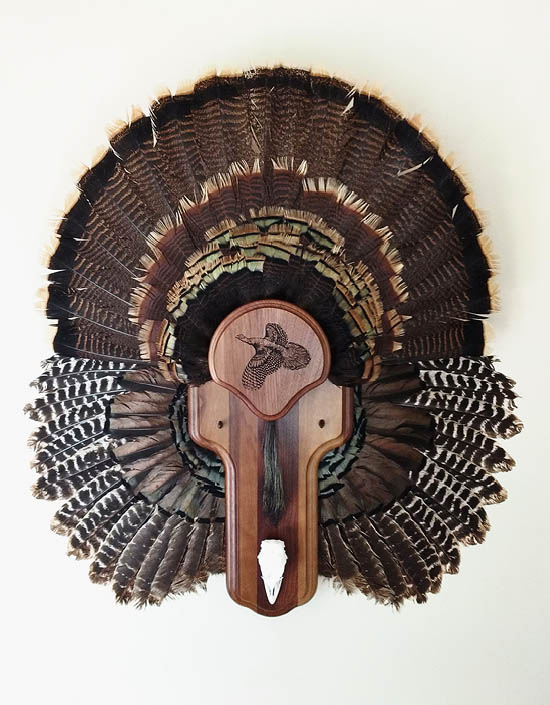Hunting Goals and Priorities
I didn’t shoot the photo above; I borrowed it from the Utah DWR. However, it perfectly captures what goes on in my mind 25 hours a day, 8 days a week, 366 days a year.
The Utah archery deer hunt opens this Saturday! From there I’ll have 4 weeks to accomplish the one thing I live for: harvesting a trophy buck with my bow. In this article I’m goint to talk about goals and priorities and how they relate to hunting and life.
Hunting Goals
Each bowhunt I go through the same process: A grand, ritualistic prehunt meditation that consumes my being. My mind is being reformatted. Time expands to include the present, past and future simultaneously. As I sit here typing, I’m already in the woods. For the last couple weeks I have become useless in every facet of my life. My soul is set upon a nearly impossible goal that consumes every minute of the day. My phone rings, people talk, and I walk around, but it is all background noise. I can’t focus on anything but the glorious task ahead of me.
As the hunt nears, I also become overly hopeful. Last year my goal was to shoot my third 200+ inch deer in five years. I hunted harder and put more days in than ever before, and I didn’t even see a 200″ deer. The biggest was maybe 180″.
Half-way through the season I started to realize that any big four-point was the best a bowhunter could hope for these days, mainly because there just aren’t that many big bucks left. Thanks to greater and greater human expansion into Utah’s winter range–not to mention a whole new onslaught of statewide poaching and highway casualties–fewer and fewer bucks live to maturity. So the odds of success are always declining. Does this mean I should set the bar lower? Maybe; I’ll wait for that deer to step out and then decide.
Hunting Priorities
Being a professional photographer, archery instructor, taxidermist, and writer has made this the busiest year of my life. I worked every single day in July, mostly out in the hot sun, sometimes ten hours without a break. As busy-ness began winding down, I was discussing work with an associate of mine. He remarked, “Hey, at least the money is good, right?” I said, “You know, the only reason I work so hard is so I can take the entire hunt off work if necessary. Bowhunting is all I care about. Every single thing I do–the whole reason I even get out of bed in the morning–is so I can hunt. Everything else is secondary. When my wife asked me to marry her, I tried to warn her, but she married me anyway (ha-ha). I know my purpose in life…”
There’s a saying: People enjoy what they’re good at (and despise what they suck at.) A couple years ago I had an epiphany: I’m good at lots of things (archery, photography, music, taxidermy, etc.), but I’m great at only one thing: Bowhunting. I didn’t choose it; it chose me.
Not too many years ago I stunk at hunting, so I only committed to hunting three or four days a year. Now I commit several weeks, mostly because I know that quality bucks take a lot of time, skill, and yes, even luck. And the best way to be successful and lucky is to be in the field, not at home, not at work, not golfing, etc. I set a very lofty goal, then do whatever it takes to achieve it.
I also know a whole lot of very unsuccessful hunters, some whom are close family and friends. Most of them say that I’m lucky and they’re not. Maybe they’re right, but I’ll tell you right now: while I’m alone in the woods from Tuesday through Friday, or trudging five miles up some frozen canyon in three feet of snow, those people are sitting at work or in front of the television, waiting for me to get lucky. And then I stumble into some unsuspecting giant…
Conclusion
Long story short, trophy hunting isn’t for everyone. Most hunters would be happy with any deer, or at least some sort of consistency from year to year. But it’s hard to achieve even moderate success when we put so many other priorities ahead of hunting.
I believe everyone get’s ONE THING; one big thing that you’re great at. That’s the great mystery of life; finding that one thing! Unless that “one thing” is hunting, don’t expect a trophy deer too, because in the deer woods it’s all or nothing. You either commit 100% to the task loooooong before the season opener, or you’ll likely fail. The season blows in and out, haphazardly.
This blog is about one thing: Successful trophy bowhunting. I truly believe that success in hunting is a decision, and anyone who sets their priorities in that direction will accomplish it year after year.
When I was just starting out as a photographer, I made a conscious effort to learn only from the greatest photographers and study only their methods. There were tons of “good” photographers out there, but great photography can only be learned from the greats. The same idea applies to hunters.
I don’t know that I am a great hunter. But I do believe in the methods I’ve developed and follow. I also believe that the greatest teacher is the woods itself. I know there is a natural law and how to follow it. I know how a mountain lion hunts and survives by successfully taking a deer every ten days or so all year-round. Lions are the “greats” of the hunting world.
Lastly, I believe that the road map to success is fully integrated into the text of this blog and my book, Zen Hunting. I don’t think I’ve left anything out, but I will keep trying to help.
Good luck this year!






















